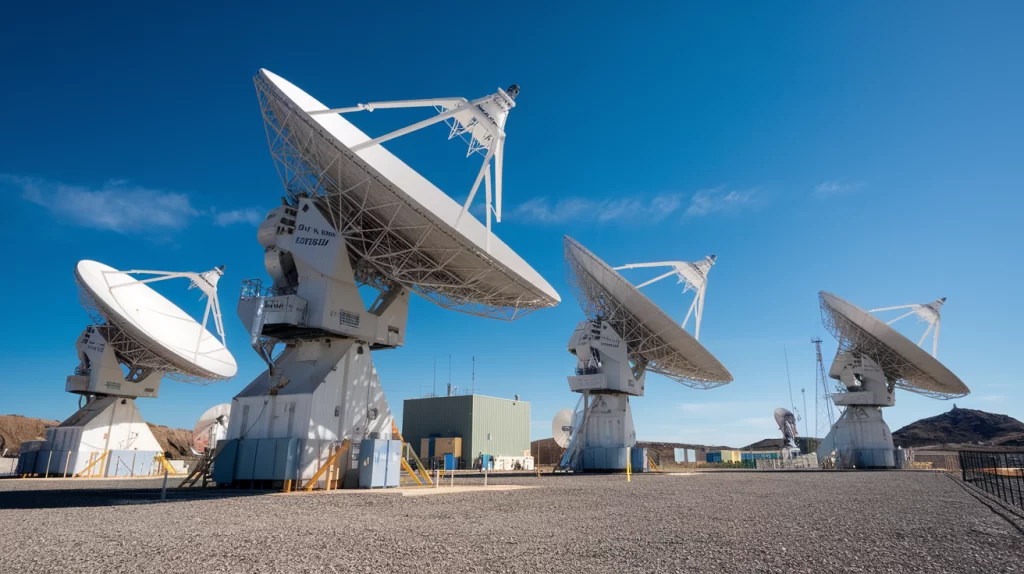North America is leading the global satellite ground station market is projected to grow from USD 61.5 billion in 2023 to USD 115.4 billion by 2028, at a CAGR of 13.4 %. Several factors contribute to North America’s dominance, including a strong focus on technological advancements, a thriving commercial space sector, significant government investment, and the presence of leading industry players. In this article, we will explore the key drivers and insights behind North America’s leadership in satellite ground station innovation.

Download PDF Brochure @
https://www.marketsandmarkets.com/pdfdownloadNew.asp?id=98562261
1. Technological Advancements and Innovation
North America, particularly the United States, is home to cutting-edge innovations in satellite communication technologies. The rapid development of Ground Station as a Service (GaaS) has been a game-changer for the satellite industry. GaaS allows satellite operators to rent ground station services on a subscription or pay-per-use model, reducing the need for costly infrastructure investment. This trend is particularly strong in North America, where companies are increasingly adopting cloud-based solutions and advanced software to manage satellite data, communication, and mission control.
Additionally, advancements in miniaturization of space technology have allowed for the deployment of smaller, more efficient satellites. This has fueled the demand for more versatile and adaptable ground station platforms, from fixed to mobile and portable solutions, which can handle a broader range of satellite operations.
2. Government Initiatives and Military Applications
Government agencies in North America, particularly in the U.S., are playing a crucial role in the growth of the satellite ground station market. Agencies such as NASA, the Department of Defense (DoD), and other federal bodies are investing heavily in satellite-based communications, Earth observation, and space research. Programs such as the Space Development Agency’s (SDA) National Defense Space Architecture are geared towards developing satellite communication constellations that require ground station infrastructure to support real-time communication, situational awareness, and defense missions.
The need for secure satellite communication systems to support military and defense operations is another driving force behind innovation. Mobile ground stations, in particular, are being rapidly adopted by the military to provide real-time connectivity and data transfer in remote and harsh environments. These portable stations can be deployed in the field for disaster relief, surveillance, and reconnaissance missions, offering critical communication links in areas where traditional infrastructure is unavailable.
3. Private Sector Investment and the Commercial Space Race
The commercial space sector is booming in North America, with private companies like SpaceX, Blue Origin, and Amazon’s Project Kuiper leading the charge in satellite deployment and space exploration. These companies, along with others in the telecommunications and defense sectors, are investing billions in developing robust satellite communication systems, including ground station networks, to support their growing fleets of satellites.
Private sector investment in Low Earth Orbit (LEO) satellite constellations is a significant driver of demand for satellite ground stations in the region. LEO satellites require ground stations to manage frequent and low-latency communication as they orbit closer to Earth. The commercial space race is fueling competition and pushing technological boundaries, leading to more efficient and innovative ground station solutions.
4. Rising Demand for Earth Observation and Data Services
The demand for satellite-based Earth observation services is another key driver of the North American satellite ground station market. Satellites play a crucial role in monitoring climate change, natural disasters, environmental conservation, and urban planning. The ability to collect and analyze data from space is becoming increasingly important for both government and private organizations.
In North America, companies and agencies specializing in remote sensing, mapping, and geospatial intelligence are heavily reliant on satellite ground stations for processing the vast amounts of data generated by Earth observation satellites. Ground stations are essential for downloading, storing, and analyzing this data in real-time, enabling organizations to make informed decisions in areas such as agriculture, forestry, mining, and disaster response.
5. Key Players and Collaborations
North America is home to several major players in the satellite ground station market. Companies such as General Dynamics Corporation (US), Raytheon Technologies (US), Lockheed Martin (US), and Kongsberg Gruppen (Norway) are at the forefront of developing advanced satellite communication systems. These companies are leveraging cutting-edge technologies such as artificial intelligence (AI), machine learning (ML), and cloud computing to optimize ground station operations and improve satellite communication efficiency.
Collaborations between private companies and government agencies are also fueling innovation. For instance, partnerships between the U.S. Department of Defense and commercial satellite operators are helping to develop dual-use technologies that benefit both military and civilian applications. These collaborations are fostering the growth of a robust ecosystem that promotes satellite communication innovation across multiple sectors.
6. Focus on 5G and IoT Integration
Another factor propelling North America’s leadership in satellite ground station innovation is the integration of satellite communication systems with 5G networks and the Internet of Things (IoT). As 5G technology rolls out across the region, there is an increasing need for satellite systems to provide connectivity in remote or underserved areas where terrestrial networks are limited or unavailable.
Satellite ground stations are critical for managing the growing volume of data generated by IoT devices and enabling seamless communication between satellites and terrestrial networks. The convergence of 5G, IoT, and satellite communication is opening up new opportunities in sectors such as agriculture, healthcare, logistics, and transportation, where reliable connectivity is essential.
7. Challenges and Opportunities
Despite North America’s leadership in the satellite ground station market, there are challenges that need to be addressed. Regulatory hurdles, spectrum allocation, and cybersecurity threats are some of the key concerns that need to be managed to ensure the continued growth and security of satellite communication systems.
Ask for Sample Report @
https://www.marketsandmarkets.com/requestsampleNew.asp?id=98562261
However, these challenges also present opportunities for innovation. For example, the development of cybersecure ground stations is becoming a priority, particularly for defense and government applications. Companies that can provide robust, secure solutions are likely to gain a competitive edge in the market.